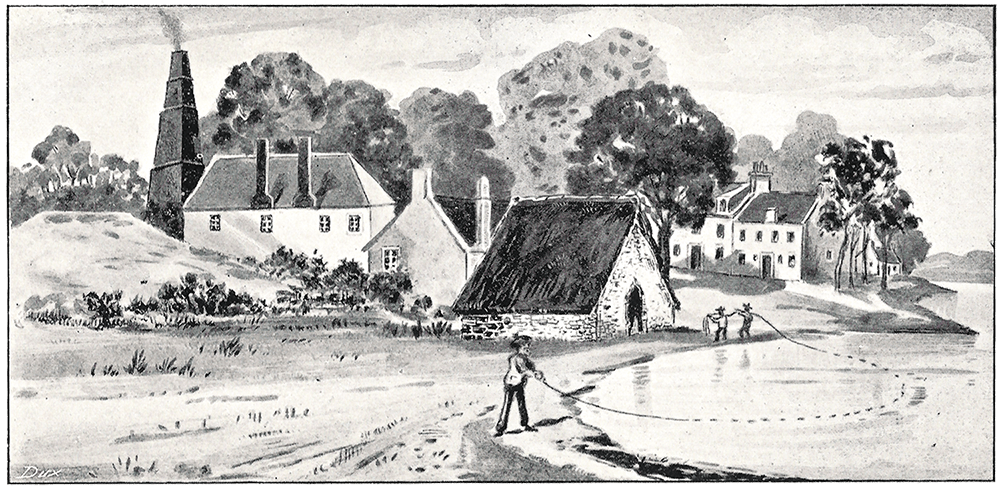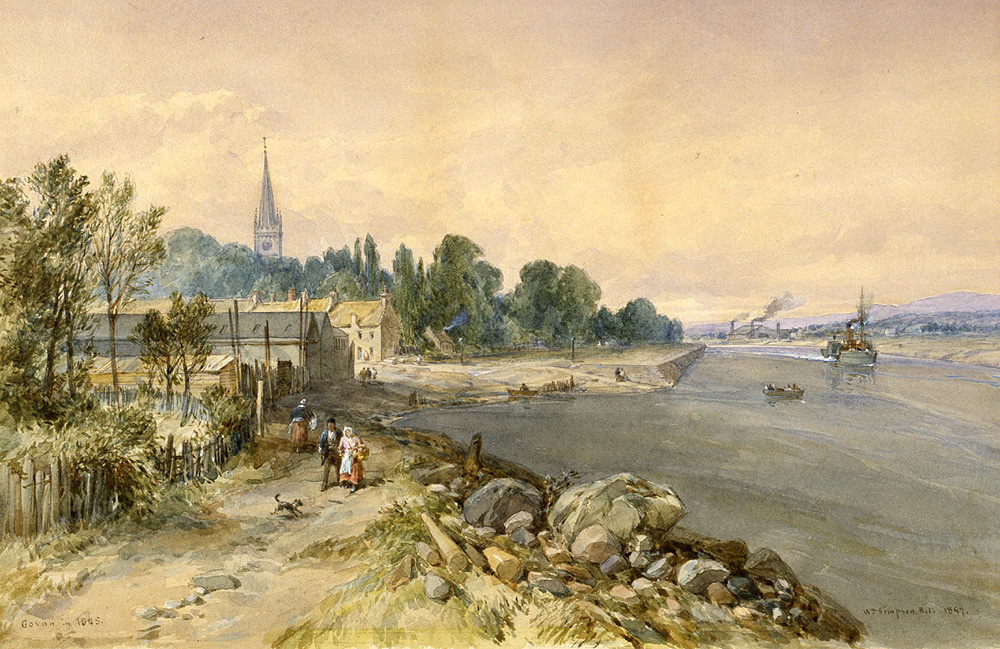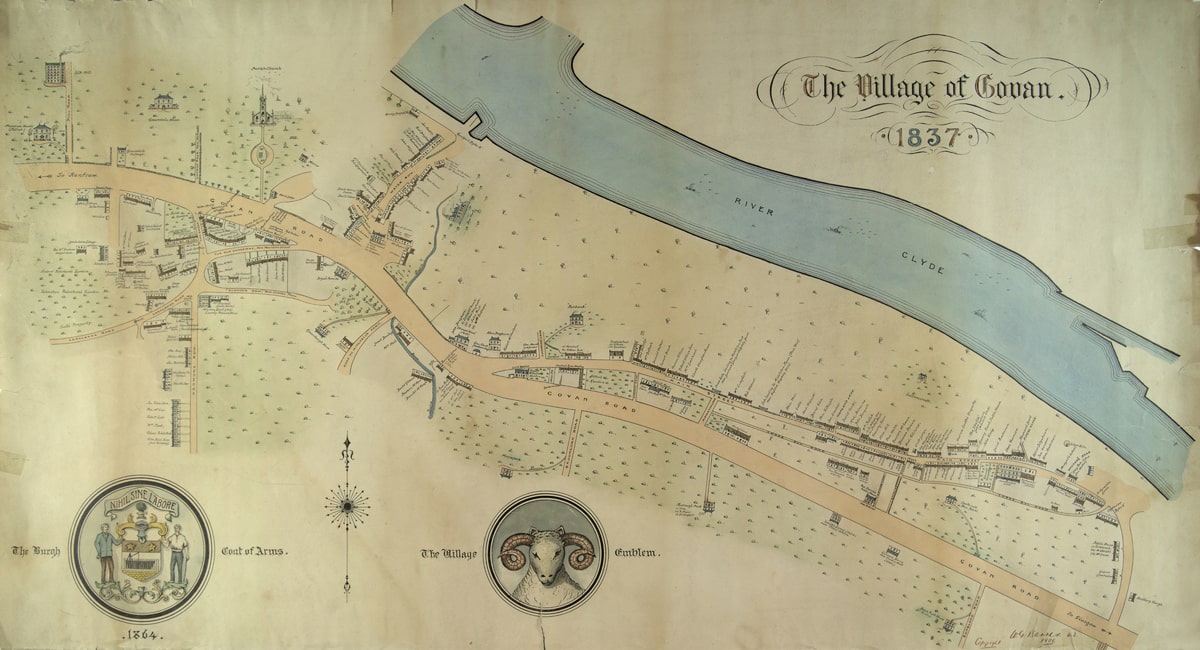Meikle Govan
The gift of the lands of Govan and Partick to Glasgow Cathedral by King David I in the 12th century meant that anyone who held land there paid an annual rental to Glasgow Cathedral, not much is known about these rentallers or the extent of the village in the 13th and 14th century and what records do exist mostly relate to church affairs, however, we do know that Govan was a substantial village in the 15th century because in 1454, whole houses, barns and mills in the village were brought down by a great flood which "put all the toun of Govane in ane flote, quhile thai sat on the houses" (Chalmers’ Caledonia Vol. III).
At the reformation the rentellars of Govan became heritable owners of their lands, these early landowners were known as the "Govan Bonnet Lairds" and included some old Govan families such as the Hills, Gibsons, Stevens, Rowans and McNairs. After the reformation we find out more about Govan and the session records of Govan Parish Church gives us an insight into village life at the start of the 17th century, it is at this time we find the village being called "Meikle Govan", Meikle is a Scots word for "Great" or "Large" and was added to the name to distinguish Govan from the village of "Little Govan", which lay 3 miles upriver at the eastern end of Govan Parish.

The Ram's Head or "Sheep's Heid" as it is known locally was the emblem of Govan Village.(Drawing by Dr. W.G. Barras)
Village life was mainly centred around the parish church from whose pulpit it was preached in true Presbyterian fashion, that "there shall be no fishing on a Sunday". The Kirk Session of the church tried to ensure that Meikle Govan was of good moral standing and offenders would be punished, punishments such as being placed in jougs and branks and then chained to the pillar of repentance in the churchyard was perhaps the most severe, a man drinking in ferry man John McNair's inn on a Sunday was summoned by the church beadle to appear before the Kirk for his indiscretion, ironically the church beadle was the innkeeper's brother Adam McNair.

One of the many iterations of Govan Church which stood on this ancient site, built in 1826, it was moved in 1884 brick by brick to John Street (Golspie Street) to become Elder Park Parish Church. (Sketch by A. J. Macpherson)
The main industry of the village had been salmon fishing, however, sometime before the foundation of the Govan Weaver's Society in 1756, hand-loom weaving had already replaced fishing as the main industry, the village also boasted many inns and the Old Victualling Society established in 1777 was said to be the first co-operative society in Scotland. By 1836 the population of the village of Govan was only 2122, the main industries at Govan were still textile based, with a silk mill (said to be the first in Scotland) and dye works in the village, the hand-loom weavers in many of the cottages also still fished for salmon in the springtime and kept small market gardens.

A sketch of a fisherman's hut at Water Row in 1815. Doomster Hill and the chimney of Reid's Dye Works can be seen on left. (Sketch by T.C.F. Brotchie).
Govan village consisted mainly of thatched cottages with crow stepped gables thronged along two main streets; Water Row and Main Street (now Clydebrae Street), both of which ran gently to meet the river. It was a pastoral and picturesque riverside scene which was a much favoured subject in the 19th century for artists such as William "Crimea" Simpson and writers such as Hugh MacDonald who in the 1850s described that: "Govan has a genuine old world look" and that each cottage "having been permitted apparently to hing as it grew" was "determined to retain its straw bonnet in defiance of the innovating slate". The village was also surrounded by common ground for pasturing and bleaching and small farms, west of Water Row stood the village church, manse and glebe. Govan was very much a typical thriving rural village with a "landscape of the fairest English type".

Clydebrae Commons, east end of Govan 1843. Banks o' Clyde Tavern in background and Kelvinhaugh Ferry approching ferry steps. (by Michael Honeyman)
Throughout the 17th and 18th centuries, Govan's larger neighbour Glasgow had grown larger and more prosperous due to trade, however Govan had remained relatively unchanged until 1839 when the first shipbuilding yard opened in the village on Water Row, for the first decade and to a lesser extent beyond, Govan still managed to retain its "old world look", however, many of the weavers were now employed as shipbuilders. To accommodate those arriving in Govan to work in the shipyards the first tenements were built in the 1850s in Albert Street (now Orkney Street) and Victoria Street (now Neptune Street). Things were changing rapidly in the village as Brotchie in his History of Govan wrote :
"a new order of things had arisen in the village. The clang of the hammer drowned the hum of the weaver's shuttle and in a few year "the iron king" absorbed all that was assimilable of old Govan"

Govan in 1845 by William Simpson. Napier's shipbuilding yard and foot of Doomster Hill can be seen on left, Govan Old Parish Church Steeple in background. (Glasgow Museums)
